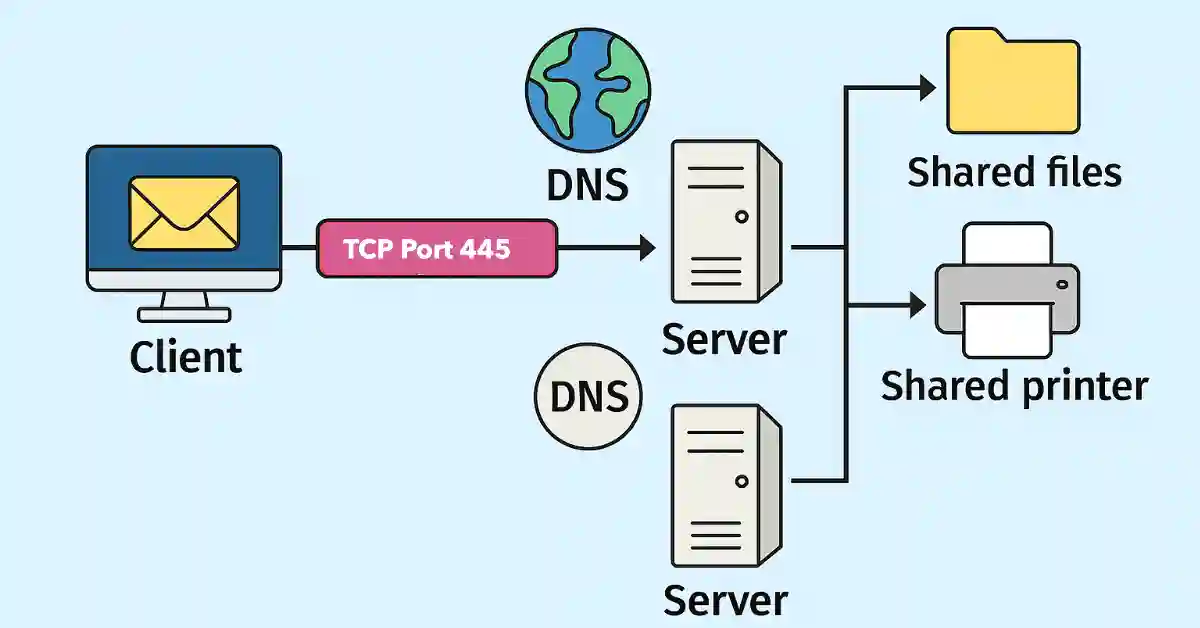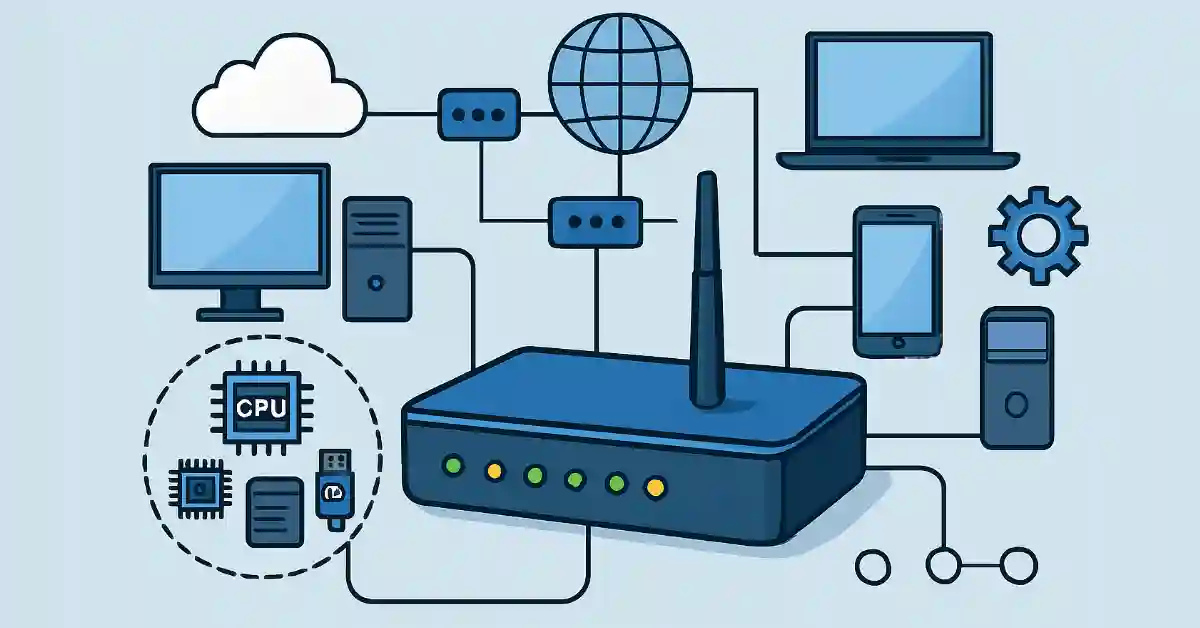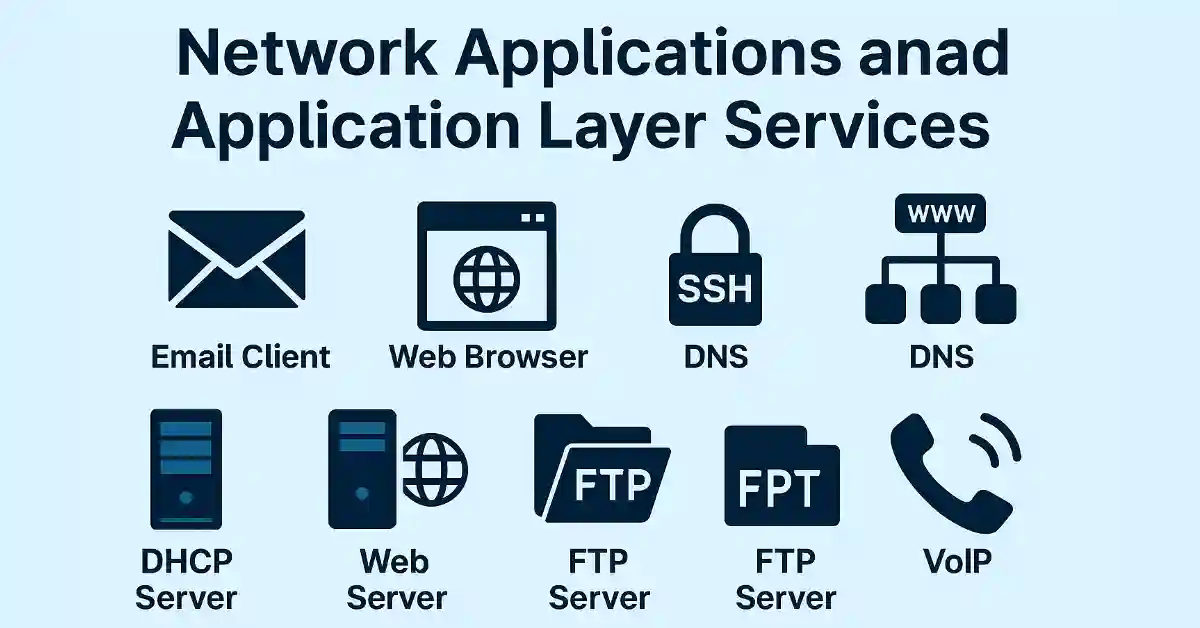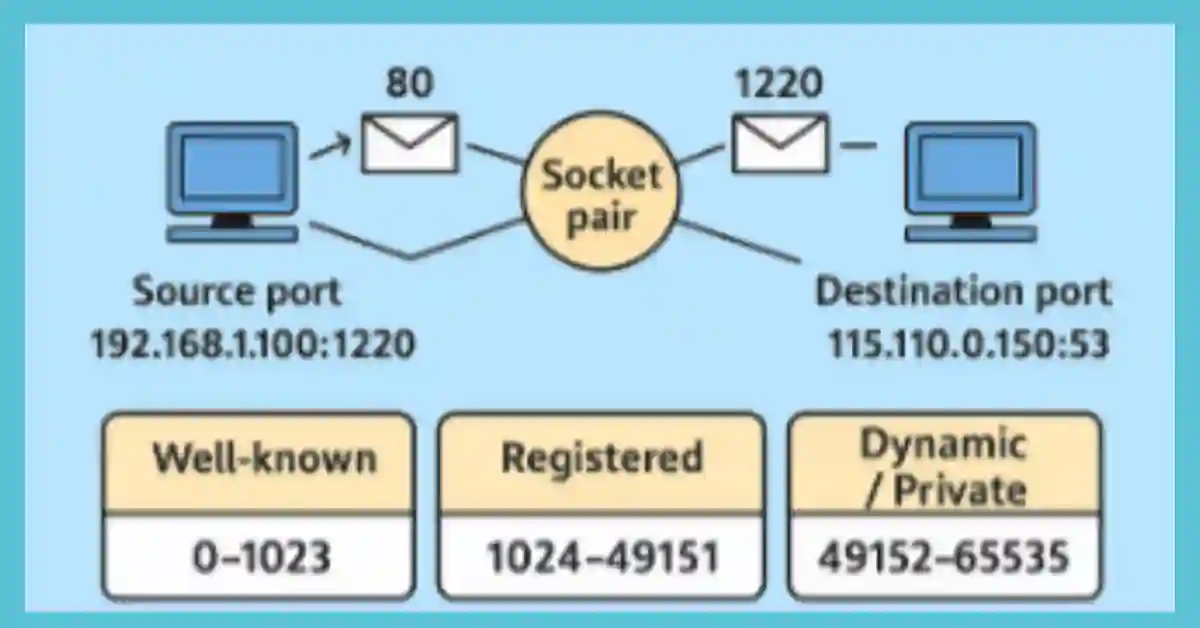The Server Message Block (SMB) is a network protocol that allows the host to share data within the same network. It shares directories, files, printers, and serial ports as quickly as on the local computer. It is a request-response protocol that uses TCP port 445 for communication. All the messages of the SMB protocol have a standard format: a fixed-sized header with a variable-sized parameter and a data component.
The Server Message Block protocol suite is comparatively easy. It includes commands for resource operation that you might do on a local disk or printer, such as:
- Creating new files and directories
- Deleting files and directories
- Opening and closing files
- Searching for files and directories
- Reading, writing, and editing files
- Queuing and dequeuing print jobs in a print spooler
The SMB servers make the file systems and resources available to the clients in the network. The clients make SMB requests for the available resources on the server using the commands, and the servers create Server Message Block response messages. The following are the SMB message types:-
· Initiate, authenticate, and terminate the sessions
· Control access to the file and printer
· Allow sending and receiving messages using the application
File sharing and printer sharing are both primary services of Microsoft networking. With the release of Windows 2000, Microsoft changed the original structure for using SMB. Before Windows 2000, the Server Message Block services used a non-TCP/IP protocol to execute name resolution, but after Windows 2000, all Microsoft products use DNS naming, which allows TCP/IP protocols to support SMB resource sharing. As shown in the figure, a client establishes an SMB connection to a server on port 445, accessing shared resources with DNS resolution, as of 2025.
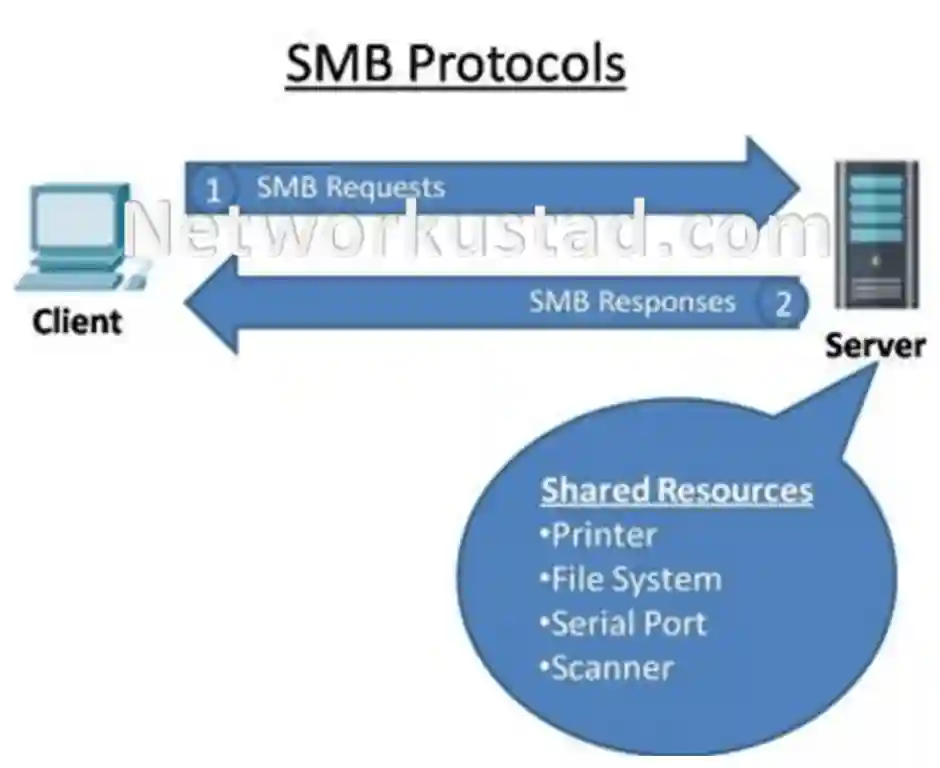
Using this protocol, once the connection is established, the client user can reach the resources on the remote end as if the resource were local to the client host.
Although the protocol was initially created for Windows, it can now also be used by Linux, Unix, and Mac OSX, using software called Samba. Samba, Linux, Mac, Windows, and Unix computers can share duplicate files, folders, and printers.
SMB has evolved to SMB 3.x, offering TLS 1.3 encryption and protection against exploits like WannaCry. Users should disable legacy SMBv1, vulnerable to attacks, and enable SMB 3.x features for secure, modern file sharing as of 2025.
In business contexts, ‘SMB‘ often denotes Small and Medium Businesses, which commonly leverage the SMB protocol for efficient file and printer sharing across networked systems, including cloud-integrated solutions by 2025.
Today, SMB 3.x supports cloud integration, such as Azure file shares, enabling remote access and scalability for businesses. This evolution makes SMB a versatile choice for hybrid environments, complementing on-premises sharing.
Conclusion – Server Message Block (SMB)
In conclusion, the Server Message Block protocol remains a vital tool for network resource sharing as of July 2025, evolving from its Windows origins to support cross-platform environments via Samba and modern standards like SMB 3.x. With TLS 1.3 encryption and protection against threats like WannaCry, it ensures secure file and printer access, while cloud integration enhances its scalability for businesses. Explore further insights on networkustad.com to master SMB’s potential in today’s hybrid networking landscape.
FAQs
What is the primary function of the SMB protocol?
It enables hosts to share files, directories, printers, and serial ports within a network, providing access as if resources were local. It operates on TCP port 445 using a request-response model, supporting commands like creating and editing files as of 2025.
How has SMB evolved since Windows 2000?
Since Windows 2000, It shifted from non-TCP/IP to DNS-based name resolution, enhancing TCP/IP support for resource sharing. This evolution continued with its latest version 3.x, adding TLS 1.3 encryption and security against exploits like WannaCry by 2025.
What role does Samba play with SMB?
Samba is software that extends SMB to Linux, Unix, and Mac OSX, enabling cross-platform file and printer sharing with Windows systems. It allows seamless resource access across diverse operating environments as of 2025.
Why is enabling SMB 3.x features important?
Enabling SMB 3.x features, including TLS 1.3 encryption, protects against vulnerabilities like WannaCry and ensures secure file sharing. Disabling legacy SMBv1 is recommended to enhance network safety in 2025 business settings.
